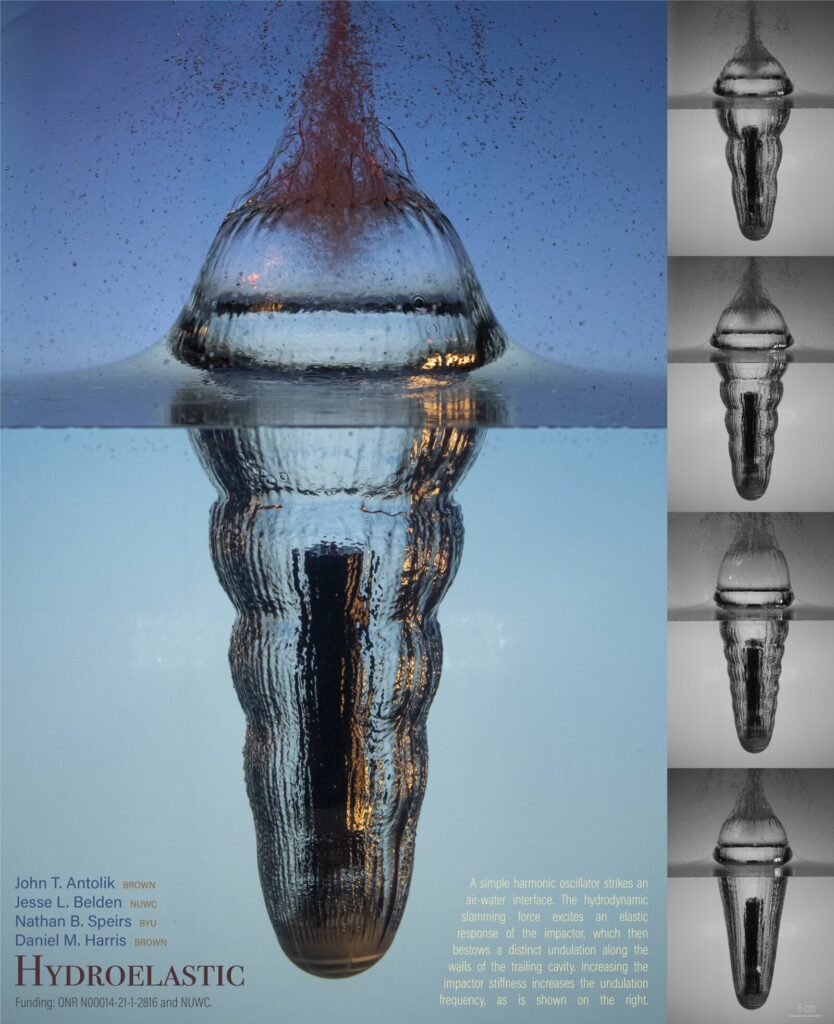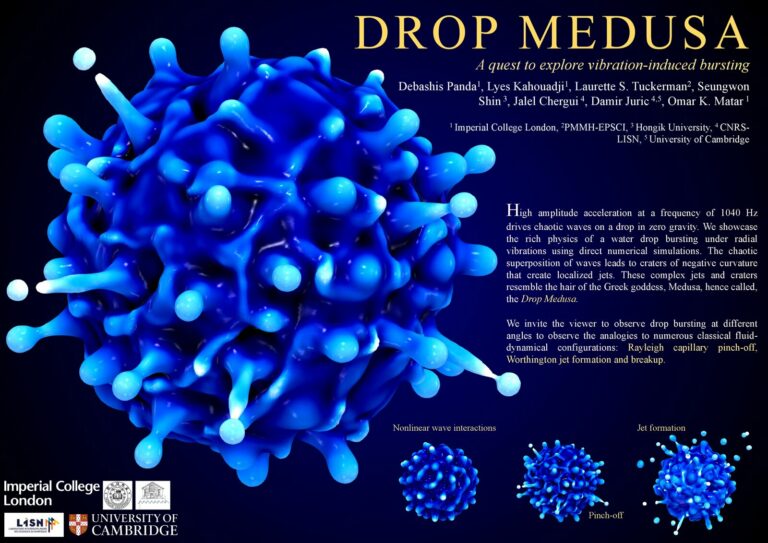Competing for the Optimal Image of Fluid Flow: From ‘Liquid Lace’ to the ‘Drop Medusa’
Annually, during its annual meeting, the American Physical Society’s Division of Fluid Dynamics hosts a competition honoring the finest images across various categories, all centered around fluid flow. The 76th meeting, held in November in Washington, D.C., showcased this year’s gallery, featuring 12 captivating artistic videos and images chosen from four distinct categories. Here, we highlight some of the winners.
‘Liquid lace’
Precise calibration is essential for 3D polymer printers to dispense their material onto a substrate. If the polymer is deposited insufficiently or too slowly, it may result in the formation of patterns, such as kinks or coils, as the material accumulates unevenly. The accumulation on pre-existing coils can introduce disorder and compromise structural stability (refer to the video).
In this context, researchers from Princeton University observed and documented the pattern that emerges when too little material is printed too slowly. The outcome manifests as organized and stable layers, resembling a type of “lace” with voids in certain parts of the structure. This approach utilizes less material and accelerates the printing process.
Controlling the voids in the lace pattern can be achieved by adjusting the layer height and printing speed, influencing the density of the final printed structure. Experience this visual demonstration in the accompanying video, accompanied by the musical backdrop of Bach’s Violin Sonata No. 2 in A Minor.
‘Drop Medusa’
Generating vibrations in a small liquid droplet under zero gravity conditions results in a striking pattern featuring “jets” and “craters,” reminiscent of the husk on the seed of a chestnut tree. The researchers, who derived this image through numerical simulations, draw a comparison to the hair of Medusa, the Greek goddess with the power to turn observers to stone. Consequently, they aptly refer to their creation as the “Drop Medusa” (depicted at the beginning of this article).
The chaotic, nonlinear waves observed in this image are a consequence of radial vibrations with high amplitude occurring at a consistent frequency of 1040 Hertz. The superposition of waves during the radial vibrations contributes to the distinctive jet and crater effect as the droplet disintegrates.
‘Hydroelastic’
To illustrate the interaction between hydrodynamics and elasticity, often referred to as “hydroelasticity,” this team captured images of objects being dropped onto the surface of liquid water. When an object enters the water with sufficient speed, it creates an air cavity beneath the surface. Typically, this cavity exhibits smooth walls, but for specific impactors, the force of impact generates vibrations, resulting in a distinctive pattern of ripples or undulations along the walls of the air cavity. Comprehending this dynamic relationship, as the authors suggest, may hold significance for diverse applications, including the understanding of biological divers or the design of naval and aerospace structures.

Dynamics of frost propagation
Water droplets, known as “breath figures,” materialize when moisture encounters a cold surface. These droplets amalgamate into larger formations, and within the gaps, new, smaller droplets emerge. In the presented video, an abrupt cooling of the underlying surface captures the freezing process of the droplets, accompanied by the release of latent heat, as observed through an infrared camera.
The freezing of the droplets progresses from the surface upward, with frost advancing along the water condensation patterns. Individual droplets freeze, creating ice bridges between them, ultimately culminating in a charming pinnacle atop the frozen droplets. The video showcases the enchanting features and movements inherent in this phenomenon.
This article is republished from PhysORG under a Creative Commons license. Read the original article.
Do not forget to share your opinion with us to provide you with the best posts !




0 Comments